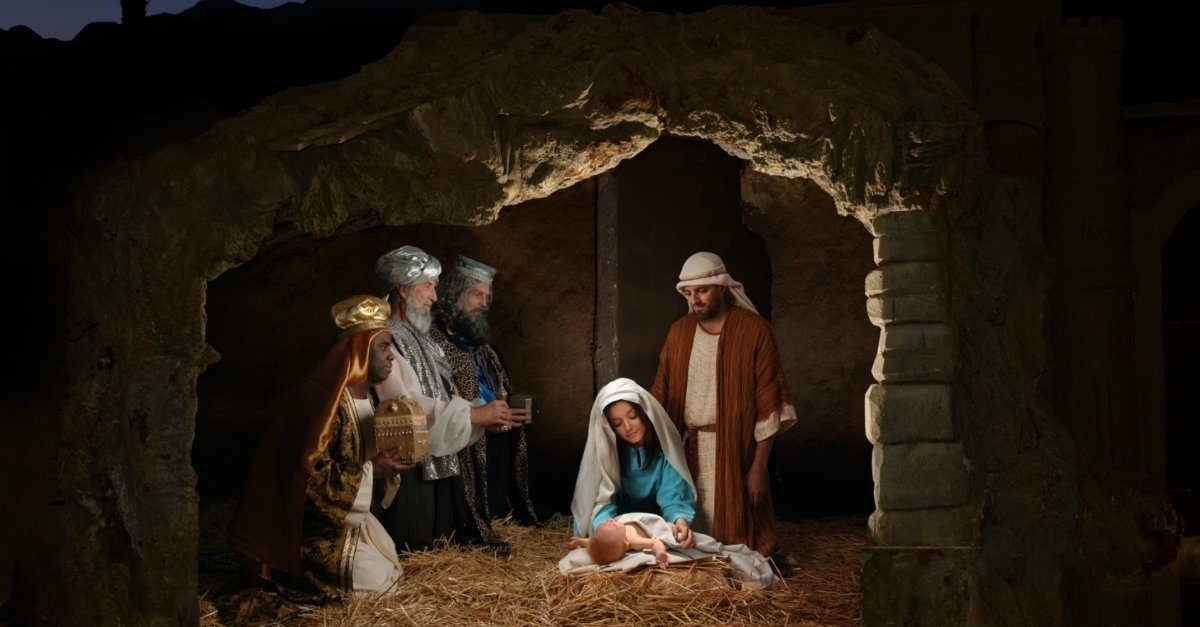Christmas is the merriest time of year. It’s a holiday filled with magic and wonder as well as a lot of misconceptions and myths. Today, in celebration of the holiday season, we’re taking a closer look at some festive white lies and full-blown fabrications you likely still believe.
7 MYTHS You Still Believe About Christmas!

1. The “True Love” in 12 Days of Christmas is a romantic partner
In the song 12 Days of Christmas, there are multiple gifts that are given to the singer, one more in every song verse.
It makes it seem like it’s a romantic offering from one lover to another, but according to the Catholic church, the gifts are actually from God to a practitioner of the Catholic faith.
For instance, two turtle doves represent the Old and New Testaments and the six geese-a-laying represent the six days it took to create the earth, and the ten Lords-a-leaping represent the Ten Commandments.
2. Santa’s reindeer are all male
This myth comes from both the media representing Santa’s sleigh pulling team as all male, and the fact that most of them have male sounding names like Blitzen and Comet. However, according to scientists at Edinburgh University in Scotland, male reindeer shed their antlers just before Christmas, after their automating season is over. So, if that’s the case, then the eight-antlered reindeer we see in all sorts of media during the holidays pulling Santa’s sleigh are actually all female. Yes, even Rudolph, who’s traditionally seen as an antlered, red-nosed version wouldn’t have the antlers around the 25th.
3. The official Christmas colors are red, green, and white
A common belief is that the official colors of Christmas are red, green, and white but actually that’s not the case.
Besides the fact that white is technically not a color, the traditional three colors of the holiday are red, green, and gold.
Red represents the blood of Christ. The green symbolizes life itself along with rebirth, and gold represents light, royalty, and wealth. Gold is also the color of the sun, symbolic of showing the way through the dark winter and keeping you warm.
It was also one of the gifts brought by the Wise Men and is traditionally the color of the star that they followed to find Jesus in the manger.
4. Christmas Day sees the most deaths
It’s a popular belief that loneliness and depression on Christmas Day lead people to take their own lives more than any other day of the year.
From 1973 to 2001, Christmas did see the most deaths occur, making it the most deadly day of the year. But those were mostly accidents and health issues, not suicides.
In fact, the holidays actually see the lowest number of suicides, which tend to occur more in the late spring and early summer.
5. Christmas causes the most breakups
The holidays are known to bring people together, but the stress of family get-togethers for Christmas dinner, meeting your significant other’s family for the first time, or just overall holiday stress can lead to relationships ending, right? Well as it turns out, the idea that Christmas day brings about the most breakups is actually a myth.
December 25th is literally the least popular day to end a relationship, according to research and data collected from Facebook. However, one sad reality is that two weeks before Christmas is actually one of the most popular times to break up.
6. Boxing Day was created for returning Christmas gifts
As most of you know, Boxing Day is December 26th, the day after Christmas, and many believe it was invented as a day to either return unwanted presents or take down all of your festive decorations. But of course, that’s a modern piece of fiction.
Boxing Day actually began in the UK during the Middle Ages. It got its name from churches taking their collection boxes and handing out the money they’d received to poor individuals in the neighborhood. It was the alms boxes that gave Boxing Day its name.
Now, traditionally, this is also the day that butlers, maids, and servants were allowed to celebrate Christmas with their families, as typically, they had to cater to their bosses the day before.
7. Jesus was born on December 25th
While the church stands behind the original story, multiple scientists have come forward with evidence to the contrary shrouding this myth in controversy.
For instance, in the nativity story, the Bible says that shepherds were in their fields, but it’s very cold in Bethlehem in December and nothing grows, and sheep need to be sheltered at that time.
It also says that Mary and Joseph were traveling for a census, but back then, censuses took place in September or October before travel would be impeded by harsher weather. So, most scholars agree Jesus Christ was likely born in late September.



